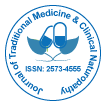Honeybee Pollen with Health Beneficial: An Update
Received: 06-Dec-2017 / Accepted Date: 07-Dec-2017 / Published Date: 12-Dec-2017 DOI: 10.4172/2573-4555.1000e141
Editorial
Phytochemicals, such as phenolic compounds are considered beneficial for human health since they decrease the risk of degenerative diseases by reducing oxidative stress and inhibiting biomolecular oxidation with free radical-scavenging activity [1].
Polyphenols are responsible for the antioxidative and radical scavenging activities of plant food [2]. Natural honeybee products are apicultural compounds which are composed of nutritionally valuable substances and contains considerable amounts of polyphenolic compounds, mainly flavonoids, which may act as potent antioxidant molecules [3].
Pollen is one of these natural antioxidant apicultural products. Honeybee pollens are the male generative cells gathered by honeybees from flower stamens and give plenty of phenolic compounds. Bee pollen is considered a health food with a wide range of therapeutic properties. Bee pollen is receiving aspecial attention in the field of functional foods and medicines [3]. Composition of bee pollen, can vary due to their botanical and geographic origin, contain carbohydrates, amino acids, proteins, lipids, vitamins, minerals, phenolic compounds, flavonoids, concentrations of phytosterols and are also rich in phytochemicals [1].
Bee-collected pollen, which is generally gathered from pollen sample from various plants, can be considered as a potential source of energy and for human [4].
Apitheraphy, which is the medicinal use of honey bee products, has been used as a source of complementary medicine to treat a variety of acute and chronic ailments and as a functional food [5].
Honeybee pollen has been used as a beneficial food source due to the effects of its components, as it is a natural and important source of carbohydrates, proteins, amino acids, sugar, fiber, mineral salts, and vitamins (includes vitamin C, E and β carotene) [5].
A wide assay of therapeutic benefits and activities due to flavonoid glycosides of honey bee pollen is implied. These effects include, but are not limited to antioxidant, anti-inflammatory, anti allergen, antiulcer, antibiotic, anticarcinogenic, sedative, immunomodulatory, anti-atherosclerotic, antiosteoporosis, as well as hepatoprotective effects. Also, pollen can be used for curing and treating diseases that are related to the cardiovascular and digestive systems [5]. Honeybee pollen is significantly rich in natural antioxidants such as polyphenols and flavonoids therefore it may show various pharmacological effects and increase the capacity of the cells which neutralize oxidative stress. Recently, most of studies have reported the importance of apitherapy and honeybee pollen in human health and food [1,3-10]. The ethnopharmacological approach, combined with chemical and biological methods, may provide useful pharmacological leads. In this regards, the present review paper is paying special attention to honeybee pollen as a functional and medicinal food.
References
- Selamoglu Z (2017) Polyphenolic Compounds in Human Health with Pharmacological Properties. J Tradit Med Clin Natur 6: e137.
- Talas ZS, Gulhan MF (2013) Effects of various pollen concentrations on some biochemical and hematological parameters and paraoxanase activity in Rainbow trout (Oncorhynchus mykiss). Iran J Fish Sci 12: 928-937.
- Selamoglu Z, Dastan SD, Gulhan MF, Dastan T, Erdemli ME (2015) The Effects of Ethanolic Pollen Extract in Various Concentrations on Total RNA and Total Protein Levels in Different Tissues of Rainbow Trout (Oncorhynchus mykiss). Analele Științifice ale Universității Alexandru Ioan Cuza din Iași, s. Biologie animală, Tom LXI: 5-10.
- Gulhan MF, Selamoglu Z (2016) Comparison of the effects of propolis and pollen extracts in the same concentrations on some biochemical and hematological parameters in rainbow trout (Oncorhynchus mykiss). J Survey in Fisheries Sci 3: 1-8.
Citation: Selamoglu Z (2017) Honeybee Pollen with Health Beneficial: An Update. J Tradit Med Clin Natur 7: e141. DOI:
Copyright: © 2017 Selamoglu Z. This is an open-access article distributed under the terms of the Creative Commons Attribution License, which permits unrestricted use, distribution, and reproduction in any medium, provided the original author and source are credited.
Select your language of interest to view the total content in your interested language
Share This Article
Recommended Journals
51ºÚÁϳԹÏÍø Journals
Article Tools
Article Usage
- Total views: 4060
- [From(publication date): 0-2018 - Jun 23, 2025]
- Breakdown by view type
- HTML page views: 3190
- PDF downloads: 870
